New players are keeping world politics on edge. They question our political order, they operate in a networked manner and across borders – and they are using information and the Internet’s dissemination channels as a weapon. Both in ISIS’s digital jihad and in the hybrid war being carried out by Russia in Ukraine, war is also being waged with media. What role do the media play? A current perspective from Ute Schaeffer:
New asymmetric wars and conflicts pose new challenges both for the international community as well as for media development. It’s a war over minds. A war of information in which media are deployed as a weapon: to publicize and frighten, to recruit and spread targeted misinformation.
The same time ISIS fighters began spreading rapidly, Russia’s armed forces invaded Ukraine disguised as pro-Russian separatists. Whereas from a strategic and operational standpoint, ISIS militants tend to move in the direction of statehood, Russian forces charted a different course: they showed up not as conventional troops but rather as non-state combat groups, in order to be invisible and flexible. But both use hybrid methods: they rely on traditional means of waging war, highly modern weapons, on gaining territory, military aggression. However, propaganda and subversion, fright and publicity are likewise means of waging hybrid war. The new asymmetric wars could hardly have escalated so quickly if they hadn’t been able to rely on information and disinformation as tools.
This information offensive is the main explanation for why each month, 1,000 new fighters from around the world move to ISIS battlefields to offer their support. Some 15,000 fighters from more than 80 countries are said to be represented there – and not just from Saudi Arabia or Tunisia but also from China, Russia, Australia, and Europe. The targeted media campaign is the main reason why the Russian view of the Ukraine conflict predominates in Western media. New players like ISIS are stepping out onto the field. Other players, like the Russian state, have for several years been modifying their methods since they have come to understand: War is decided in the mind – meaning targeted media work and the viral dissemination of information and disinformation as a key weapon. These conflict actors still use regular media, television even print products. But their information campaign relies predominantly on social media and its community-based structure and functionality. They tweet and share, they comment and communicate in order to strengthen their community and recruit new supporters. And they use the credibility, dynamics and ubiquity of the social platforms in their aim to reach these target groups worldwide or in the conflict region itself.
For the actors in the current hybrid wars there are good reasons for using the functions of the Web 2.0 applications intensively. Why? What do the dissimilar players in these two asymmetric conflicts have in common?
They rely on narratives. They need a good story in order to establish and legitimize their ideology, their course of action in the conflict, their world view. They need models with perpetrators and victims, stories with winners and losers. These can be found in YouTube videos, in Facebook posts, in the massive numbers of polemic comments by pro-Russian trolls on media portals. Both have short-term and long-term goals: in the short term, they count on achieving narrow victories in the conflict and on gaining power and influence and enlarging their base. In the long term, however, they rely on the emergence of a new value system, a new self-understanding, aiming ultimately at an alternative identity.
Strong narratives and a clear sales pitch
Like any communication and marketing strategy they have to create a unique selling point which must be able to prevail in competition. Therefore, it has to be distinguishable and profile-endowing, attractive and joinable. Here, players like ISIS proceed with their media campaigns in a much more professional manner than other players before them: “Al Qaeda’s image is deeply unsexy,” remarks Audrey Kurth Cronin in Foreign Affairs. And Al Qaeda did not use media and information to that extent as a weapon. “Al Qaeda attracted followers with religious arguments and a pseudo-scholarly message of altruism for the sake of the ummah, the global Muslim community.” It created an “image of religious legitimacy and piety. [Its propaganda videos showed] ascetic warriors sitting on the ground in caves, studying in libraries…” ISIS in contrast offers a very attractive heroic message for young men, promising adventure, personal power and a sense of self and community: “The group’s brutal violence attracts attention, demonstrates dominance, and draws people to action.”
Such narratives are key for the new conflict players. ISIS needs attractive images and strong narratives to establish its ideology and to create a USP. Getting the message across – that is communication strategy’s primary goal. And to convey the message to quite different target groups; be it frustrated young users in Arab countries, or Muslims in Western Europe. A battle of narratives has started – which is not limited to the conflict regions in Syria and Iraq or in Ukraine and Russia, but is transmitted worldwide by broadband connections, Facebook communities and trolls.
I The information war between Ukraine and Russia
Russia is waging war in Ukraine without having declared one. In this “hybrid war” of disinformation, economic and political pressure, and covert military operations, media play a key role. Russia’s war of information against Ukraine began long before Crimea was annexed. In this campaign unleashed by the Kremlin, the Maidan protests – as with the citizen movements in the Arab world since 2011 – were actions fabricated by the West, an “attack on the whole Russian world,” as a first step in a “military campaign against the entire Russian nation.” The “battle for Kiev” has flared up, reported the Russian media. For the Russian media there was no doubt who was behind the Maidan protests: “The USA aspire to global dominance and think that they are always right, said the famous Russian TV presenter Dmitry Kisselov on April 27, 2014.
The Internet platform stopfake.org clearly shows how both governments are obviously using the media to manipulate the truth. Like for example the news produced by Russian media giant TRK Zvezda claiming that Poland has officially recognized Crimea as part of the Russian Federation. Another fabricated report produced by the Russian media claimed to be showing a U.S. Army tank with a Ukrainian trident iin Eastern Ukraine. Shortly after the publication of this picture, stopfake.org found out that it was actually taken from the website of the U.S. Army showing the tank being tested in Texas in 2013. The original picture has no Ukrainian trident.
Entrenched enemy stereotypes as narratives in the war of information
In its propaganda campaign, the Kremlin started lumping together all players under one roof as early as the Maidan protests: it was said that the demonstrations were the work of fascists and outlaws and Ukraine must not be left to the Nazis. On March 4, 2014, at a meeting with journalists, the Russian President answered his own question: “What is our biggest concern? We see the rampage of reactionary forces, nationalist and anti-Semitic forces going on in certain parts of Ukraine, including Kiev.” With these old, entrenched enemy stereotypes, Putin reawakened a traumatic past – among his fellow countrymen in Russia but also among the many Russian speakers in Ukraine who use Russian media: Germany’s campaign of annihilation against the Soviet Union starting in 1941. The democracy movement on Maidan Square as a deadly threat of war which however can be overcome by Russia just like it did before. Such interpretations spread quickly on the Internet. For instance, the head of Russia’s Motherland Party (Rodina), representative Alexei Zhuravlev, wrote on his website in March 2014: “In Ukraine, a junta has taken power. An anti-Russian junta. With its hatred, it is provoking what’s happening now in the country …. It is impossible to negotiate with the new power (in Ukraine) or to agree on anything. … they view it as their mission to annihilate the pro-Russian regions.”
Even during Soviet times, there was never such a massive propaganda campaign as that unleashed against Ukraine. “Using selective information, half-truths, appeals to emotion, lies, and orchestrated events, a parallel reality is created in which Western-controlled fascists are at work in Ukraine, waging war against their own people and seeking to bring down Russia,” analyses Russian sociologist Lev Gudkov.
Building on traditional enemy stereotypes and (with the aid of the narrative of triumphant war in the neighboring country) the hero motif of Russia as the strong world power, the Kremlin’s media campaign is working: 70% of Russians feel that they are receiving objective information about the situation in Ukraine. But the media campaign is also paying off for President Putin directly: his approval ratings in Russia have reached a high of 81%.
Ukraine resorts to counteroffensive
Ukraine‘s media has also found a way to counter Russian propaganda: “Though the lies in the media are not as evident compared to what Russian media are fabricating each day, Ukraine’s media outlets keep quiet about many topics, especially when it comes to war reporting,” says Kyryl Savin, who was Head of the Kiev office of the Heinrich Böll Foundation until June 2015.
What is missing are journalistic fundamentals – among journalists themselves and among the broadcasters and media outlets for which they work. Just one obvious example of this: in order to verify the official numbers of victims or wounded, journalists would only need to research at hospitals, but instead the reporting of official statements is predominant. “To the outside observer, the standards of Ukrainian journalism are worrying. Professionals here are few and far between, and popularity is bought with money,” observes Otar Dovzhenko from Transitions Online.
This is accompanied by a false understanding of patriotism. “Unfortunately, almost all outspoken journalists tend to self-censorship: In times of war there is no place for criticism of the government.” This is the trend Kyryl Savin observes in Ukraine. And this is why most Ukrainians live in a virtual reality which is a far cry from the one in Donbass, Eastern Ukraine. And if someone dares to say anything different, they risk paying a high price – like the famous Ukrainian TV presenter, Savik Shuster. His popular and most frequently watched “Savik Shuster Show” was taken off the air after he invited a Russian journalist to his program.
In terms of their structure and intent, the Ukrainian responses are as unilateral, aggressive and exclusive as their Russian counterparts – but their content, technical quality and distribution cannot compete with the dominant Russian TV. Official communication and media in Ukraine are responding to the Russian military campaign by imitating the Russian formats and structures. For example, as a counterweight to the glossy images of Russia’s foreign broadcaster, Russia Today, Ukraine launched its own channel: “Ukraine Tomorrow” and as RT‘s Ukrainian equivalent is creating its own image of the conflict.
”The battle against us is being fought on many fronts, the information front being one of the most important ones. In a year we have created a strong army which courageously protects us in Donbass. Now it’s time to fight back against the Russian occupiers on the information front.” This is how Ukraine‘s online army presents itself on the Internet. Moreover, in November 2014, Ukraine set up a Ministry for Information. Its main goal is to create a strategy for counterpropaganda: “To this end, a group of around 20 experienced bloggers – a so-called task force – working for the government was established. Their goal is to combat Russian propaganda,” says Kyryl Savin.
The war of words started before the first shots were fired
The media has become the key player in this information war which started long before the first shots were fired. Media coverage paved the way for the military operations in Crimea and Eastern Ukraine that followed shortly after the Maidan protests. “[F]or Moscow, the conflict in Ukraine is accelerating profound changes already under way in the Russian media: the centralization and mobilization of information in the hands of the state, providing the Kremlin – and President Vladimir Putin – with the means to galvanize public opinion domestically and in the region, as well as to forcefully assert Russia‘s policies, views and – increasingly – values on an international level.”
Independent online media like Lenta.ru or Dozhd TV and also other independent voices like Echo Moscow and RIA Novosti have experienced pressure from the government. The Russian social-networking website Vkontakte made the same experience. Vkontakte CEO Pavel Durov was forced to flee the country and now lives abroad.
The mainstreaming and censoring of the Web and Web 2.0 started with the mass gatherings in Moscow after the parliamentary elections in 2011. While TV, radio and print outlets were always in the spotlight of the censors, the Internet has not been the focus of the Kremlin’s attention for quite as long. However, all this changed dramatically in 2011. Three years later, Putin proclaimed the Internet a “CIA project”.
The Kremlin has increased censorship, prohibited the free flow of data and undermined freedom of expression.
Putin’s cyberphobia has brought forth several laws: According to one law passed at the beginning of 2014, any website can be blocked without court order if it contains extremist views. But what is defined as being extremist? No one has provided a comprehensive definition yet. Several months later, another law was passed which requires all web-based writers with posts that exceed 3,000 page views to register with the government. “Approximately 30,000 Russian bloggers were included under these new stipulations requiring that they check the facts and delete any inaccuracies in their posts or risk their sites being removed or blocked. […] it also applies to social media accounts that have posts with over 3,000 daily page views.”
The Kremlin’s High Gloss Media Campaign
Moscow has realized how important media are for the country’s image. And that by using media, politics can be accomplished and that domestic and foreign policy interests can be enforced. Therefore, the Kremlin’s information policy is two-faceted: within the country, media with a relevant outreach are censored and mainstreamed. All wide-reach channels are in line with the Kremlin, all independent voices efficiently suppressed. And outside the country, the media campaign is based on high-gloss products like Russia Today – and on an effective propaganda army – the trolls – using the Web 2.0 functionalities to spread the official Russian point of view. The headquarters of this armada are situated in St. Petersburg: the PR “Agency for Analyzing the Internet”. It currently employs about 600 people. Their main task: Influencing opinions on the Internet, disseminating the Kremlin’s position in a targeted manner through reader comments. The Kremlin’s media experts have understood that a successful social media campaign means that you cannot only publish and control your message, but that you have to participate in key conversations aiming at achieving a significant influence in Web 2.0 conversations. This is exactly how the Russian trolls act: they comment on reports by Western media – in English, German or French. In these comments they engage in undermining the credibility of the author’s quality or the quality of the whole product. And they produce their own “snackable” web products, for example the YouTube video “I am a Russian Occupant” which was watched by nearly 7 million (sic!) users. The Kremlin has invested a lot into these Web 2.0 activities knowing that success on Web 2.0 platforms means: building social authority.
The Web 2.0 campaign has two targets: to place the official Russian perspective and to undermine and disconcert public opinion among Western audiences. This second target aims at demoralizing the enemy, be it Western media, Western policy, Western public opinion. In the programs of Russia Today, conspiracy theories and simple disinformation co-exist peacefully with professionally-produced journalistic products. This makes it difficult for users to differentiate between truth and fiction. You could have found the breaking news “Ukrainian parliament prohibits Cyrillic script”. And the same evening, demonstrations took place in Moscow: “Give us back our Cyrillic!” That was a coordinated action to create riots. This is one example of how intensively planned and coordinated information and disinformation is used.
Using one-way regular media it is quite easy to create a persuasive, dominant and attractive image: this role is played by glossy TV channel Russia Today targeting foreign audiences and by the video agency Ruptly which was created in 2013.
Using these media, the Kremlin disseminates to the world its view of things: it influenced Western reporting about the Ukraine crisis to fit its needs, and via its Russian media won the propaganda war in the eastern areas of Ukraine. An investment that is paying off: In the nine years since it was founded, Russia Today has surpassed CNN in its reach. With nearly 1.2 billion YouTube views for television reports, Putin’s propaganda broadcaster is second only to the BBC. In the UK, more people watch RT than Euronews; in several large U.S. cities as well, RT is the most-watched foreign broadcaster. Its 2,500 employees report in Russian, English, Spanish, Arabic, and German. RT, former Russia Today, as described by the Lithuanian Minister for Foreign Affairs is “no less destructive than the military marching in Crimea.”
“We’re in the middle of a relentless propaganda war,” says Andrew Weiss of the Carnegie Endowment for International Peace, an influential Washington think tank. Weiss describes this propaganda as a crucial tool used by Russia to conduct its foreign policy. Moscow is looking beyond the short term, seeking to influence opinion in the long run to create “an alternative discourse in Western countries as well,” says Margarita Simonyan, editor in chief of Kremlin foreign broadcaster RT which owns Ruptly. This strategy is working, as can be seen in the reporting by German media on the war in Ukraine. Here, there are persistent images and stories claiming that radical right-wing individuals in Kiev run the government, that the Maidan protests were nothing but a campaign by Western countries, not to mention the blanket opinion that Ukrainians are incapable of statehood. These are all assertions and narratives that have their roots in Russian sources, whether public media or users on social media. This is also the source of the German discussion about the “lying press” that has unjustly cast Russia in a bad light.
II Digital jihad – the home-grown terrorist
The globalization of ISIS was only possible because of the digital communication we have today. Take the 21-year-old Arid Uka, a young man from Kosovo living in Frankfurt, working as a temporary worker at the airport. German security agencies like the German Federal Bureau of Investigation (BKA) and the intelligence services (Verfassungsschutz) had had an eye on him. He carried out the first terror attack in Germany in March 2011 that could not be prevented by security forces. In this attack Arid Uka killed two men. How could that happen? The answer is striking: “Within a couple of weeks this unknown young man radicalized himself only by sitting in front of his computer and consuming the propaganda of radical Islamic preachers,” says Loay Mudhoon, political scientist and specialist for political development in the Arab world at DW. “The biggest challenge we are facing right now here in Europe is that we don’t know who is capable of terrorist attacks and how many potential terrorists are out there. How can we tell who is likely to turn in a short space of time from a normal next-door guy into a home-grown terrorist supporting the ideas of ISIS or other radical organizations?”
Viral distribution of information used as persuasive advertisement for terror
In the past four years, 680 men and women left Germany to join ISIS in Iraq and Syria. These are people who feel discriminated and marginalized in their own societies, they feel misunderstood and isolated. Their only way out of this is the Internet. So they seek out like-minded people in chat rooms, connect with peer groups on Facebook, Twitter and other platforms. In their quest for recognition they create their own “me-sphere” which becomes their home – and a substitute family. The group dynamics develop a virtual reality in which young people easily become receptive to ISIS propaganda. “Without the digital media as transmitter of ideas, ISIS would not have the enormous influx of young men and women from Europe. Moreover, the globalization of ISIS was only possible because of the achievements of the digital age we are living in and how we use them,” says Loay Mudhoon.
Terrorism is a form of persuasive communication. Digital media play a key role for ISIS – being a persuasive form of advertising. Over the years they have learned to use them very professionally. While they once used VHS and audiotapes to convey their messages, they now harness the power of modern technology. Their messages are tailor-made for different target groups.
And they use all Web 2.0 functionalities: For example, for those young men and women sitting in front of their computers in Belgium, Germany or Sweden, ISIS delivers its messages not in Arabic but in the languages of its audience. The narrative is clear: You live in an unjust society which offers you no perspective. Join us. Here you can become someone. “ISIS conveys a romantic narrative, they foster a nostalgic desire for a nation based on justice,” says Mudhoon. This is the common rhetoric they use beyond their boundaries. However, within their scope of operations they use a different language and different topics including their claim that Saudi Arabia is not sufficiently Islamic as well as their fight against this shift in the society towards Western values and life-styles. Another topic is their fight against the Shiites which they proudly present in videos, one showing prisoners kissing the hands and feet of ISIS fighters who freed them from captivity in the Syrian city of Idlib.
What we need to realize in order to understand the importance of media for ISIS is that ISIS is more than a group of terrorist militants or a run-of-the-mill terror organization. On the contrary, it is a novel attempt to form a state in accordance with jihadist ideology. This is extremely important for understanding the complex structures of ISIS and particularly its media tools. For ISIS, media are an integral part of its jihadist undertaking to form a state.
ISIS deploys a lot of money and know-how for its information campaigns and furnishes itself with an array of its own media companies:
- al-Furqān Media: considered the most important media arm of ISIS. It has released more than 160 publications in the past year alone. al-Furqān Media produces all of the important audio messages of the “Caliph” Abu Bakr al-Baghdadi.
- I’tisaam Media: produces many messages in many languages, such as video clips in English. One of its well-known messages is the professionally produced propaganda video “Join the caravan!” (Ilḥaq bi-l-qāfila)
- Al Hayat Media Center: produces nearly exclusively in English with Arabic subtitles.
- AJNAD Media: produces high-quality audio messages to mobilize and romanticize propaganda by using elements from youth and pop culture.
The media makers of ISIS also cooperate regularly with various other media companies which produce for ISIS and distribute rebroadcast ISIS contents like
- Albatar Media: produces intermittent ISIS messages
- al-Khilafa-Media: produces extravagant films as “counterpropaganda,” particularly in response to the supposed lies by the Arabic media.
- Albayan Radio: is the first radio station of ISIS in the capital of Mosul. Broadcasts mainly news, messages, and victory announcements of ISIS in Syria and Iraq.
- “al-Khilafa-TV” television channel: is a promotion and propaganda tool, allegedly planning the payout of one of these TV channels. No other information available.
- Dabiq: is a high-quality, graphically sophisticated print magazine in English that targets European Muslims.
ISIS media target young users
ISIS’s media makers use all possible means for their propaganda – digital as well as non-digital, like newspapers and magazines. The success of ISIS’s media is based on the fact that they are made by young Muslims for young Muslims. If you look at the media trends, it is obvious that Web.2.0 is the predominant gateway to reach young people worldwide. There is a constant increase in the usage of social media by young people. The current Reuters Institute Digital News Report comes to the result that the use of smartphones and tablets has jumped significantly in the past year, with fewer people using their computers for news. It recorded that more than a third of online news users across all countries (39%) use two or more digital devices each week for news and a fifth (20%) now say their mobile phone is their primary access point.
The ISIS media makers understand the global accessibility and attractiveness of social media for young people – and they understand that those young people are frustrated, fascinated with violence, and yearn for support and belonging, and they deploy the power of images in a targeted manner. This is why social media play such an important role. It offers to those isolated, alienated, rootless individuals the perspective of being part of a community with “people like me”. In this virtual community they attain the social relevance they do not have in their real social surroundings. This is explains why social media are becoming a dominant source of news among young users. Credibility in content is created by the fact that this news is shared by “people like me” not by hostile or interest-led media houses.
ISIS media makers understand these effects and they adapt their media strategy, using all functionalities of Web 2.0. from content/news production, sharing, commenting and communicating. ISIS content production is modular, multimedia-based and in this sense “snackable” for Web 2.0. applications. ISIS content is distributed by their own media and shared by social media – like the news on the liberation of a prison in Bagdad in April 2015, or video testimonials on war progresses in Syria or Iraq or on general video channels like Twitter, Instagram, YouTube, or others. Using hashtags like #AllEyesOnISIS and #CalamityWillBefallUS, ISIS followers have flooded Twitter in the past with their messages.
Make information snackable: adapt your content to different target groupsThe information strategy of ISIS is extremely dynamic and is constantly being enhanced. Their media makers are adaptive and highly professional when it comes to successfully disseminating digital information: Use the media of your target group, speak to them in their language, be open to connecting, create a community and get it involved! This is what constitutes the success of ISIS’s information campaigns. Whether Twitter, Facebook, Tumblr, YouTube, Instagram, JustPaste, or SoundCloud – ISIS’s messages are composed and produced according to the laws of the medium. The message is packaged differently for each user group: clean and bloodless for Western users, brutal and bloody for users in the embattled countries.
The video showing the execution of James Foley (in captivity since November 2012) which has so far been viewed 1.3 million times on a website that permits such films was directed at users in the West. Dressed in an orange Guantanamo jumpsuit, Foley declared the U.S. to be responsible for his death, regretted having been born an American, and exonerated others of any fault. After he spoke these words, a masked killer who spoke English with a British accent took a knife to the journalist’s throat and began to move it. Then the image went dark. Not one drop of blood was to be seen. The beheading in front of a live camera was probably simulated.
In the videos targeting Arabic users, the language is completely different: as in the video showing the murder of rebellious members of the Sheitat clan near the Syrian city of Deir al-Zour – and their brutality is unmatched. Here, the aim is: fear and subjugation. That worked well – in many Syrian and Iraqi villages, people surrendered to the terrorist militants even though they outnumbered them.
ISIS uses social networks in way that no other terrorist group has done before. It has long overcome the language barrier in these media campaigns, content can be found in all important languages, including German and English. Using the hashtag #mujatweets, not only Arabic but also German fighters talk about the supposedly wonderful life at the front. The message is directed at young Muslims in the West: look at this, in jihad we’re all the same, jihad knows no boundaries. And role models like the Berlin rapper Denis Cuspert who became an Islamist and jihadist role model on the Internet, reinforce this. Radicalization today no longer occurs in mosques but rather in front of the home computer.
Social networks create a new public space on the Internet. Whereas these communities play only a marginal role in the social life of society and often live on its verges, an isolated, extremist community is emerging on the Internet. “For quite a long time the West did not take the radicalization of young people seriously. The common assumption was that this is not a general problem but a case for the police. And this proved to be wrong,” says Loay Mudhoon.
III Empowering independent journalism – media development in hybrid conflicts
Asymmetric wars are the wars of the future. They call into question the international order and state integrity. Their players propagate political and social counter-models, like the just Sharia state, the world power, and they do this using the corresponding media. They use existing social tensions, stereotypes, collective experiences. And they bank on long-term ideological penetration of society in the conflict zones. The viral dissemination of information over the Internet is the best way to achieve such a broad effect. This is why media are an integral part of asymmetric warfare. Put differently: the rapid escalation of the current hybrid wars would be inconceivable without the viral dissemination of information and opinions.
What can media development do in societies that are affected by these asymmetric wars?
It can make a targeted contribution towards protecting journalists better and placing more emphasis on their safety. This also applies to the handling of research results, sources and data.
Professional media and journalists in societies affected by asymmetric conflicts need special support in order to be able to continue to work in a professional, independent manner. Media development can provide targeted advice on how, even under conflict conditions, to precisely research, question, and verify what the parties to the conflict are disseminating as propaganda, including on the Internet. Journalists have to be supported in such a way that their independence and professionalism are strengthened.
In addition, media development advises journalists and media companies on how to report on such conflicts in a neutral, sensitive, yet thorough manner. How is it possible to avoid having media contribute to the escalation of conflicts? Or even becoming partial?
In light of the highly professional, cross-media, viral dissemination of information by the players in these new asymmetric wars, traditional media have a special responsibility. Their reporting is the key to providing a counter-narrative to the conflict messages which exposes them as such and at the same time delivers/transmits a different message.
But they have to adjust if they want to survive. There are new competitors who have a serious credibility among (younger) users. Traditional media have to anticipate and adapt to future trends: How can the viral dissemination on the Internet and its back channels be used in order to disseminate professionally produced content and make contact with users? Traditional media have to become able to create high-quality cross-media content by using new storytelling and a better interaction with users in social debates. Otherwise, they will continue to become less and less relevant, no longer reaching the young target groups in the conflict regions. The risk is great in these conflict zones that media will no longer be the Fourth Estate but will rather become a mere tool in the hands of state and non-state players.
Applicable to all areas of life – from personal safety and integrity to health and education – but also to the handling and use of information in asymmetric conflicts: it is important to strengthen the resilience of these societies, i.e. their ability to surmount crises. Media development also has to take users increasingly into account and enable and strengthen them in dealing with sources. (Digital) Media literacy is important. In an age in which information is accessible worldwide over the Internet, the key for users and consumers is an increased expertise in handling this digital information.
This is all the more important in that the free accessibility of information on the Internet also makes it possible to limit and manipulate information in new ways. Particularly in societies affected by asymmetric wars, journalists are at risk of no longer being the Fourth Estate but instead merely a plaything of state and non-state players – censored and suppressed by state organs, economically burnt-out, kicked around between the conflict parties and working under high risk. Media development should react with a multi-stakeholder approach, supporting journalists and users in order to counteract this trend.

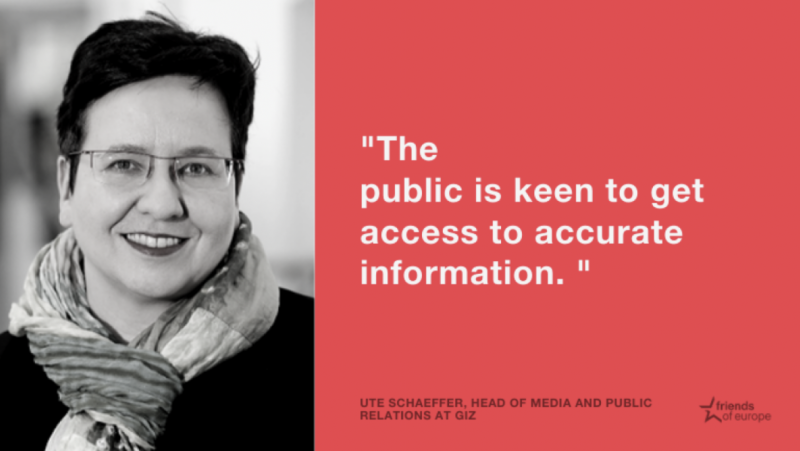
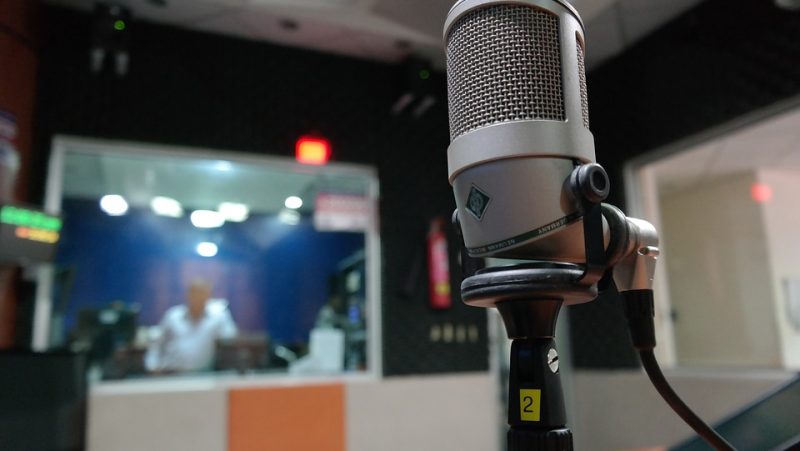
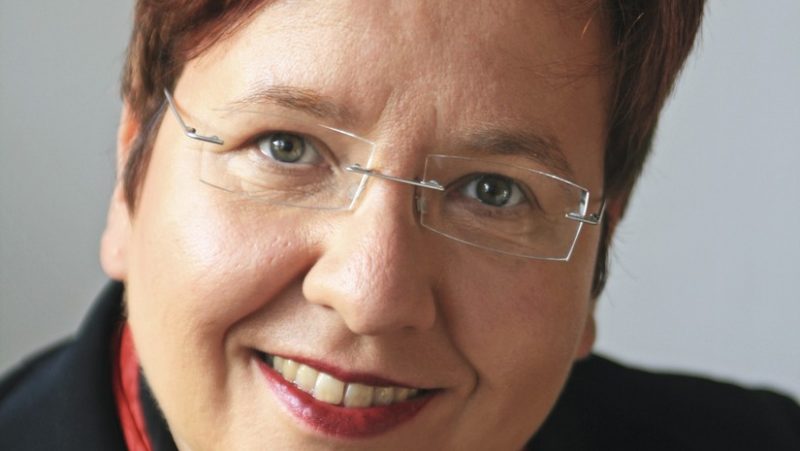

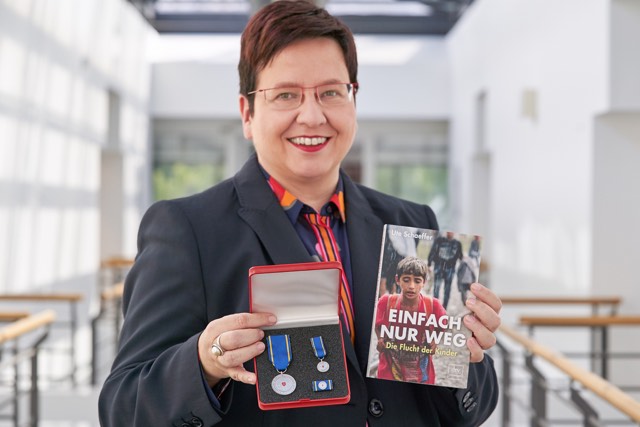
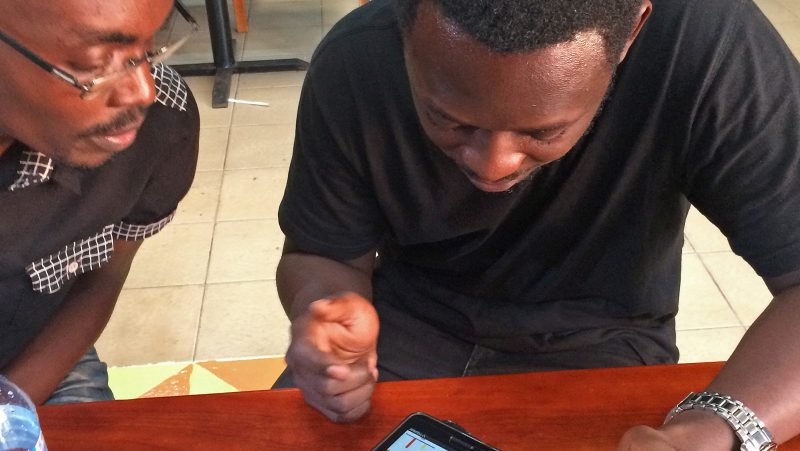
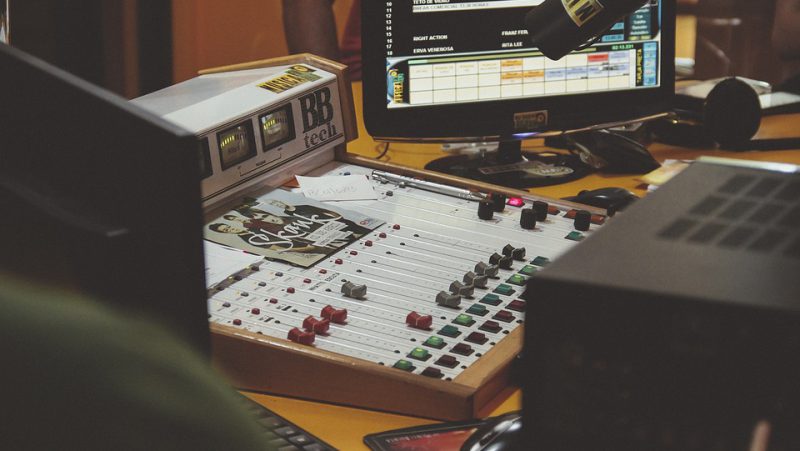


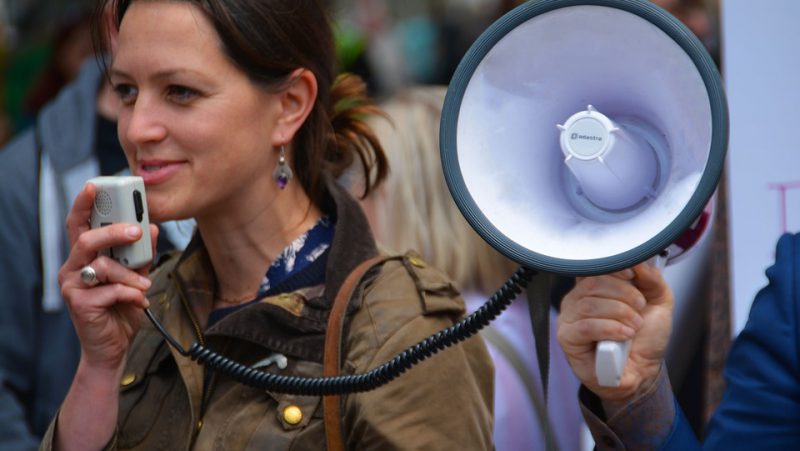
Recent Comments